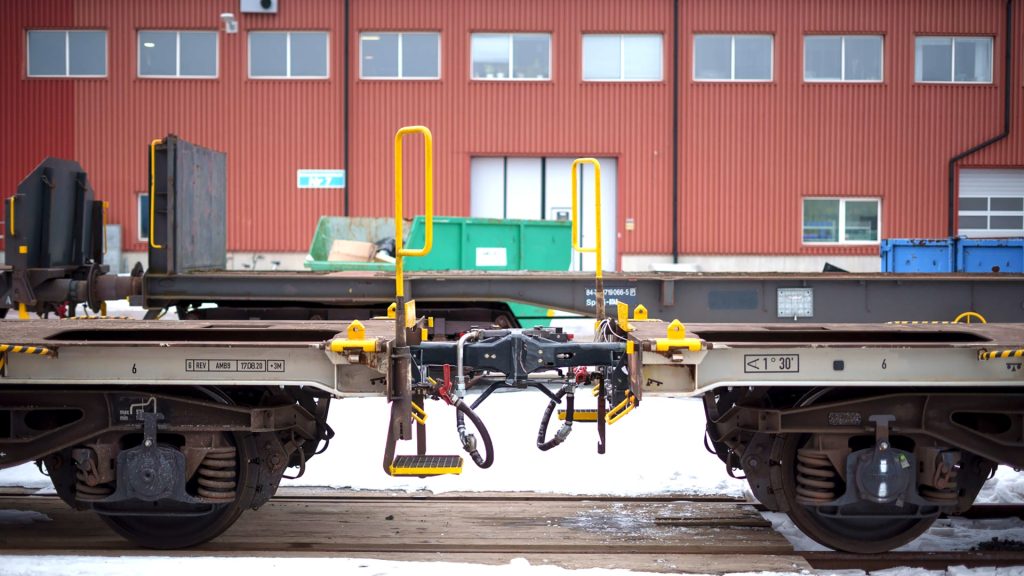 Knorr-Bremse started DAC testing in real-world conditions on a freight train operated by Trafikverket CFL on the Swedish rail network until 2025.
Knorr-Bremse started DAC testing in real-world conditions on a freight train operated by Trafikverket CFL on the Swedish rail network until 2025.
Initially, the train will include six DAC test cars, with the possibility to increase the number of cars to 20. The train is expected to cover around 100,000 kilometers each year.
Knorr-Bremse has installed its DAC with support for Automation Level 2. At a later stage, the train will be equipped with couplers that support higher levels of automation which will enable fully automated decoupling and, combined with the Knorr-Bremse Automation System, will support a wide variety of intelligent and telematic features for process automation. Operating the train in winter, including ice tests, is regarded as the ideal durability test for the coupling system, which must meet the highest standards of resilience.
“Testing our systems under real-world conditions is another big step forward in developing advanced technologies for the rail freight sector. We expect the tests to provide us with valuable insights that will further concentrate and accelerate our development of market-ready solutions,” said Nicolas Lange, Chairman of the Management Board of Knorr-Bremse Rail Vehicle Systems.
The tests will be carried out under the aegis of the EU’s research and innovation program, Europe’s Rail Joint Undertaking (EU-Rail).
The conclusions of the DAC testing will enable Knorr-Bremse to push ahead with the focused development of automated rail freight systems, aiming for market launch by 2025. From 2026, Knorr-Bremse aims to become the leading supplier of automated system solutions for freight transport. By leveraging the company’s engineering skills, industrialisation expertise and close-knit service network, backed by a systems approach based on high-quality hardware (DAC), a dedicated automation system and data-driven services, Knorr-Bremse will play a key support role in the future of rail freight.
Knorr-Bremse was confirmed as an authorized DAC manufacturer in December 2022 by TÜV-Süd and the European DAC Delivery Programme.
Currently, around 500,000 freight cars and 17,000 locomotives are still coupled manually which “means that the rail freight sector represents a vast future market for automation and digitalisation,” Knorr-Bremse says.
At the same time, Knorr-Bremse has finished developing a portfolio of passenger train coupling systems with Hitachi placing the first order for such technology.



